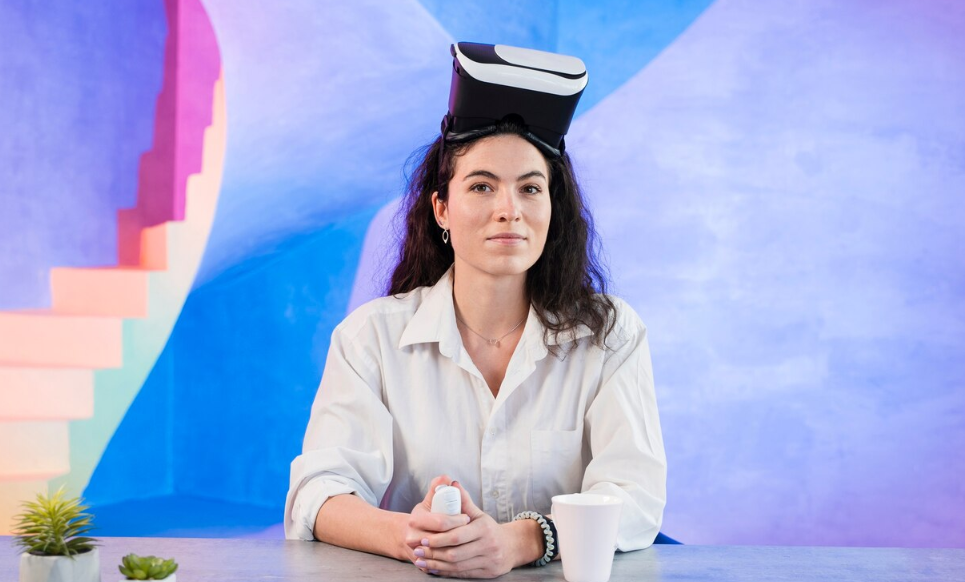The world of art has always been shaped by new tools and technologies—from the invention of the paintbrush to the digital revolution. Today, a new frontier is emerging at the crossroads of artificial intelligence (AI) and human creativity. As AI systems grow increasingly sophisticated, artists, technologists, and philosophers alike are asking: Can machines be creative? And how does AI reshape our understanding of art?
Defining Creativity in the Age of Machines
Traditionally, creativity has been viewed as a uniquely human trait—an expression of emotion, imagination, and personal experience. But AI challenges this notion by generating original works that appear creative: paintings, music, poetry, and even film scripts.
AI doesn’t “feel” or “imagine” in the human sense. Instead, it analyzes vast datasets to identify patterns and generate new content based on learned structures. This raises an important question: Is AI truly creative, or is it mimicking creativity?
How AI Creates Art
AI-driven art is typically produced using machine learning models—especially generative models like Generative Adversarial Networks (GANs) or Transformer-based systems. Here’s how it works:
- GANs: One neural network (the generator) creates images, while another (the discriminator) evaluates them. The generator improves over time by learning from feedback.
- Large Language Models (LLMs): Systems like GPT can write poems, scripts, or artist statements by predicting and generating coherent text based on training data.
- Style Transfer: AI can apply the visual style of one artwork (e.g., Van Gogh) to another image, merging aesthetics across eras and cultures.
These tools don’t just replicate—they remix, reinterpret, and often surprise their human collaborators.
Human-AI Collaboration: A New Creative Process
Rather than replacing artists, AI is increasingly being seen as a creative partner. Artists use AI to:
- Explore new visual styles
- Generate ideas and overcome creative blocks
- Produce large volumes of work quickly
- Experiment with forms and techniques not possible by hand
This collaboration often leads to unexpected outcomes. For example, the artist Mario Klingemann uses neural networks to generate surreal portraits, while Refik Anadol turns data into immersive, AI-powered installations.
AI becomes part of the artistic process—not an end, but a means of expanding human expression.
Examples of AI in Contemporary Art
- “Portrait of Edmond de Belamy”: Created by the Paris-based collective Obvious using a GAN, this AI-generated artwork sold at Christie’s for over $400,000.
- DALL·E and Midjourney: Text-to-image models that allow users to generate stunning visuals from simple prompts.
- AIVA (Artificial Intelligence Virtual Artist): An AI that composes music for film, games, and commercials.
These examples show how AI is not just a tool but a participant in the creative process.
Ethical and Philosophical Questions
The rise of AI-generated art brings with it complex questions:
- Authorship: Who is the artist—the human who trained the AI, the AI itself, or both?
- Originality: Can AI-generated work be considered truly original, or is it derivative of its training data?
- Ownership: If AI is trained on copyrighted works, does the output infringe on intellectual property rights?
These debates are ongoing, and as AI becomes more prevalent in creative industries, legal and ethical frameworks will need to adapt.
AI Expanding Access to Creativity
One of the most powerful aspects of AI in art is its ability to democratize creativity. With easy-to-use tools, people with little to no artistic training can create visually stunning or emotionally impactful works. AI lowers the barrier to entry, opening the door to new voices and perspectives in the art world.
The Future of AI and Art
Looking ahead, the relationship between AI and creativity is poised to deepen. We may see:
- Real-time co-creation between humans and machines
- Emotion-aware AI, capable of adjusting output based on the user’s mood
- Multi-sensory AI art, combining visuals, sound, touch, and even smell
- Personalized generative art, tailored to individual preferences
As AI tools evolve, they won’t replace human creativity—they will augment and amplify it, helping us explore the boundaries of imagination.
Conclusion
The intersection of AI and art is not about machines taking over creativity, but about reimagining what creativity can be. As we embrace AI as a collaborator, we unlock new possibilities for artistic expression, innovation, and cultural dialogue. In this shared space between algorithm and artist, a new kind of beauty is being born—one that reflects both the power of technology and the enduring spark of human inspiration.


